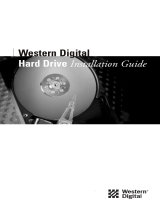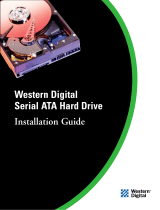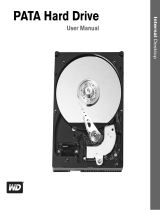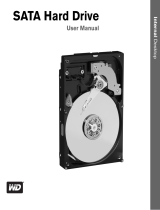
-6-
Warranty Information
Obtaining Warranty Service
Western Digital (WD) values your business and always strives to
provide you the very best of service. No limited warranty is provided by
WD unless your WD Product (Product) was purchased from an
authorized distributor or authorized reseller. Distributors may sell
Products to resellers who then sell Products to end users. See below
for warranty information or obtaining service. No warranty service is
provided unless the Product is returned to an authorized return center
in the region (Americas, Europe-Middle East-Africa, or Asia Pacific)
where the Product was first shipped by WD.
Important: If your Product was originally purchased as a component
integrated within a system by a system manufacturer, no limited
warranty is provided by WD. Contact the place of purchase or the
system manufacturer directly for warranty service.
Return Material Authorization
No Product may be returned directly to WD without first contacting
WD for a Return Material Authorization (RMA) number. An RMA
number may be obtained from our online support website at
support.wdc.com. An unauthorized return, i.e. one for which an RMA
number has not been issued, will be returned to you at your expense.
Authorized returns are to be shipped pre-paid and insured to the
address on the RMA in an approved shipping container. Your original
box and packaging materials should be kept for storing or shipping
your Product. For information on approved shipping containers, visit
our product support website at support.wdc.com.
Limited Warranty
WD's limited warranty provides that, subject to the following
limitations, each Product will be free from defects in material and
workmanship and will conform to WD's specification for the particular
Product.
Duration of Warranty
The warranty period commences from the date of manufacture
appearing on the Product label of the original Product purchase. To
verify this period for your Product, visit product support website at
support.wdc.com. In the United States, some states do not allow
limitations on how long implied warranties last, so the above limitation
may not apply to you.
Other Warranty Limitations
For further important information on limitations on WD's warranty, see
below or visit our product support website at support.wdc.com and
click on Warranty Policy.
Disclaimer of Warranties
There are no warranties which extend beyond the face of the
WD limited warranty. WD disclaims all other warranties,
expressed or implied, regarding the Products, including any
implied warranties of merchantability, fitness for a particular
purpose or noninfringement. In the United States, some laws
do not allow the exclusion of the implied warranties.
Your Use of the Product
WD will have no liability for any Product returned if WD determines
that:
• The product was stolen from WD.
• The asserted defect:
a. is not present,
b. cannot reasonably be fixed because of damage occurring when
the Product was in the possession of someone other than WD, or
c. is attributable to misuse, improper installation, alteration
(including removing or obliterating labels), accident or
mishandling while in the possession of someone other than WD.
• The Product was not sold to you as new.
Limitation of Remedies
Your exclusive remedy for any defective Product is limited to
the repair or replacement of the defective Product.
WD may elect which remedy or combination of remedies to provide in
its sole discretion. WD shall have a reasonable time after determining
that a defective Product exists to repair or replace a defective
Product. WD's replacement Product under its limited warranty will be
manufactured from new and serviceable used parts. WD's warranty
applies to repaired or replaced Products for the balance of the
applicable period of the original warranty or ninety days from the date
of shipment of a repaired or replaced Product, whichever is longer.
Limitation of Damages
WD's entire liability for any defective Product shall in no event
exceed the purchase price for the defective Product. This
limitation applies even if WD cannot or does not repair or
replace any defective Product and your exclusive remedy fails
of its essential purpose.
No Consequential or Other Damages
WD has no liability for general, consequential, incidental or
special damages. These include loss of recorded data, the
cost of recovery of lost data, lost profits and the cost of the
installation or removal of any Products, the installation of
replacement Products, and any inspection, testing, or
redesign caused by any defect or by the repair or replacement
of products arising from a defect in any Product.
In the United States, some states do not allow exclusion or limitation
of incidental or consequential damages, so the limitations above may
not apply to you. This warranty gives you specific legal rights, and you
may also have other rights which vary from state to state.
Online Warranty Inquiry
For further warranty information and inquiries, visit our product support
website at support.wdc.com and click on Warranty Policy. The new
online Warranty Inquiry System will provide warranty status based on
the serial number of the Product.
Extended Warranty
Certain WD products may be eligible for purchase of additional or
extended warranty options. For further details, visit our product
support website at support.wdc.com and click on Warranty Policy.
Western Digital and WD are registered trademarks; and the WD logo, Data Lifeguard, and
Data Lifeguard Tools are trademarks of Western Digital Technologies, Inc. Other marks may be
mentioned herein that belong to other companies. Western Digital reserves the right to change
specifications at any time without notice.
© 2006 Western Digital Technologies, Inc. All rights reserved.
2079-001026-213 Aug 2006
















